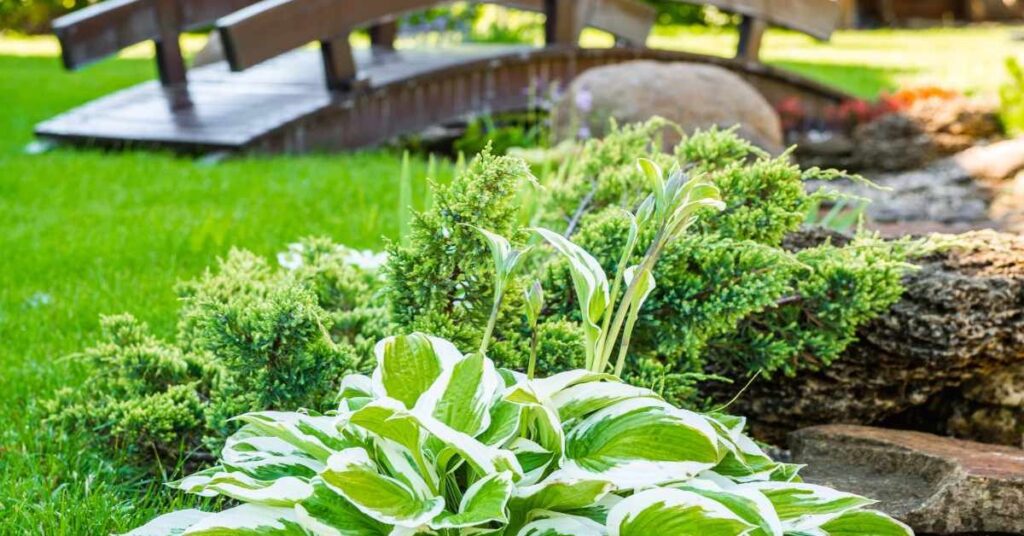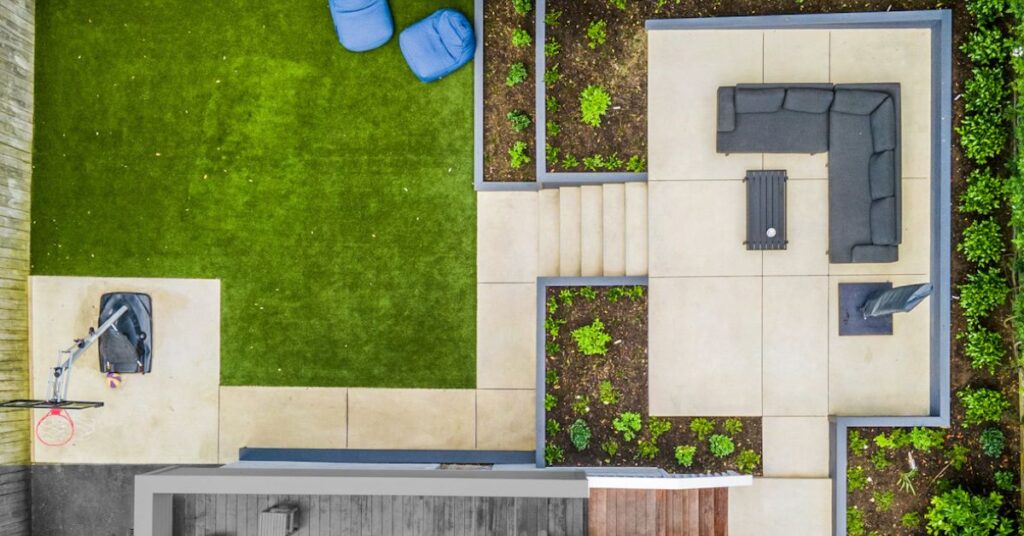Garden Hacks Decoradhouse – Tips To Make Your Garden Shine!
From my experience, using simple garden hacks really improved my yard. Following DecoradHouse tips, like grouping plants and adding fun décor, made it easier to care for.
Garden hacks DecoradHouse offer simple and creative ways to improve your outdoor space. By using easy tips like plant grouping, adding unique décor, and smart layout ideas, you can transform your garden effortlessly.
Stay tuned with us as we share the best garden hacks DecoradHouse. We’ll show you easy tips and tricks to make your garden look great and be easier to care for. Don’t miss out on these simple and fun ideas.
What are the best plants for garden based on climate?
The best plants for your garden depend on your climate. First, think about whether your area is hot and dry, cool and wet, or something in between. If you live in a dry place, go for drought-tolerant plants like succulents, lavender, or ornamental grasses.

These plants can handle the heat and need less water. If your area is cooler or gets more rain, plants like ferns, hostas, or astilbes will thrive in the shade or moist soil. The key is choosing plants that match your climate so they grow strong with less effort.
To make sure you’re picking the right plants, check your USDA hardiness zone, which shows which plants can survive in your area. By choosing the right plants, you’ll save time and effort while creating a garden that thrives year-round.
Read More: Animal:yzozt5bfcfa= Mouse – Guide to Its Ecological Role!
What’s the difference between perennials and annuals?
| Feature | Perennials | Annuals |
| Life Cycle | Live for more than one year. | Live for only one year. |
| Bloom Time | Bloom every year after they are established. | Bloom once and then die by the end of the season. |
| Care | Need less care once they’re established. | Need replanting each year. |
| Examples | Lavender, Hostas, Peonies | Marigolds, Petunias, Sunflowers |
| Cost | Usually more expensive at first, but save money long-term. | Cheaper to buy, but need to be replaced every year. |
| Growth | Grow back bigger each year. | Need to be planted fresh every season. |
How can I create a functional garden layout? – AStep-by-Step Guide!
Creating a functional garden layout is all about making your space both practical and enjoyable. Here’s how you can do it:

Plan Wide Paths:
First, think about how you’ll move around your garden. Make sure the paths between your garden beds are wide enough for easy access. This will save you time when you need to water or harvest your plants. Gravel or stepping stones are great options for creating clear, simple paths.
Group Plants by Needs:
Next, arrange your plants based on their sunlight and water needs. For example, put sun-loving plants together in bright areas and shade-loving plants in cooler, shadier spots. This makes watering and care much easier and ensures each plant gets what it needs.
Use Raised Beds for Better Drainage:
If your soil doesn’t drain well, raised beds are a fantastic solution. They help water flow better, which is especially important during rainy weather. Plus, raised beds allow you to control the soil quality more easily.
Read More: octenium nom de domaine .dz – Boost Your Online Presence in Algeria!
Maximize Vertical Space:
To save space and keep things tidy, use trellises or stakes for climbing plants like peas or beans. This way, your plants grow upwards, freeing up room for other plants on the ground.
Create Zones for Different Activities:
Finally, think about how you use your garden. If you want a relaxing area, place seating near colorful flowers or fragrant herbs. By creating different zones—like a cooking space or a garden-to-table area—you’ll make the space more functional and enjoyable.
What are some essential garden maintenance tips to keep my garden healthy?
Taking care of your garden can be easy if you do a few simple things. Here are some tips to keep your plants happy and healthy:

Water Your Plants Regularly:
First, make sure to water your plants often. It’s best to water them in the morning or evening when it’s cooler. This helps the water soak in better. Use a watering can or hose to make sure all your plants get enough water.
Cut Off Dead Leaves and Flowers:
Next, remove any dead leaves or flowers from your plants. This keeps your garden looking neat and helps the plants grow better. Just trim the dead parts every few weeks.
Use Mulch Around Your Plants:
Adding mulch around your plants helps keep the soil moist and cool. It also stops weeds from growing and gives your plants extra nutrients as it breaks down.
Feed Your Plants:
Plants need food too! Use compost or plant food to give them the vitamins they need to grow strong. You can feed them in the spring or summer.
Pull Weeds Early:
Weeds can take over your garden if you don’t remove them. Check your garden every week and pull out any weeds you see. Mulch can also help keep weeds away.
Check for Bugs:
Lastly, look for bugs on your plants. If you find any, try to remove them by hand or use safe treatments like neem oil. This helps keep your plants safe from pests.
Read More: about clearskinstudycom – Ultimate Resource for Healthy Skin!
How to Care for Your Garden Year-Round? – Beautiful Every Season!
Gardening changes with the seasons. Here’s how to care for your garden throughout the year:

- Spring: In spring, start by clearing away dead leaves and debris. Then, prepare your soil by loosening it and adding compost. This helps your plants grow strong.
- Summer: During summer, make sure to water your plants often, especially in the evening. This helps them stay hydrated without losing too much water to the heat.
- Fall: Fall is a good time to plant perennials. Also, add mulch around your plants to protect them from the cold. Clean up fallen leaves to keep pests away.
- Winter: In winter, cover delicate plants with mulch or frost cloth to protect them from the cold. Also, check for snow or ice and remove it gently from your plants.
How can personalize garden with décor? – Transform Your garden hacks decadgarden!
Personalizing your garden is a fun way to make it your own. You can add colorful decorations like statues, wind chimes, or fairy lights to make it feel lively.
Using unique pots, like old buckets or painted jars, is another simple idea. These give your plants a fun touch.If you like to relax outside, place a bench or chair in a quiet spot with flowers around it. It’s a peaceful place to enjoy your garden.
You can also mix different styles, like rustic or modern, to make it more interesting. Finally, adding natural things like stones or a birdbath brings a calm, natural feel.
Read More: Fintechzoom Spy Stock – Expert Tips for Investors!
What Are Some Cheap Garden Hacks With Dollar Store Items?

dollar tree garden hacks:
You can find affordable gardening tools and materials at the dollar store. Look for items that can be repurposed for your garden.
- Use plastic containers as plant pots.
- Repurpose small baskets as hanging planters.
- Buy seeds and gardening tools at a lower cost.
baking soda garden hacks:
Baking soda is a versatile and inexpensive solution for garden care. It can help with pest control and soil health.
- Sprinkle around plants to prevent pests like ants and slugs.
- Mix with water to neutralize soil acidity.
- Use to clean gardening tools and remove rust.
olive garden hacks:
Don’t throw away some items from Olive Garden; they can be handy in your garden!
- Save empty Olive Garden breadsticks bags to create mini greenhouses for seedlings.
- Use their Parmesan containers for watering small plants (easy to control flow)
vegetable garden hacks:
- Use eggshells for nutrients and pest control.
- Compost kitchen scraps like coffee grounds.
- Use a trellis for climbing veggies.
- Mulch to keep soil moist and reduce weeds.
pool noodle garden hacks:
- Cut pool noodles into small pieces to mark plant rows in your garden. They are colorful and easy to spot.
- Use whole pool noodles to create soft edges around garden beds. This helps keep soil in place and can stop weeds from spreading.
- Slice pool noodles into rings and hang them on a wall or fence to store your garden tools neatly.
- Cut pool noodles in half and place them around young plants to protect them from frost or cold weather.
- Hollow out a pool noodle and place it in the soil to help water plants evenly. It acts as a simple irrigation system.
ikea garden hacks:
- Use IKEA shelves for raised garden beds.
- Turn IKEA baskets into planters.
- Make a compost bin with plastic bins.
awesome green garden hacks that actually works:
- Use coffee grounds to enrich soil and repel pests.
- Create your own compost from kitchen scraps to fertilize plants.
- Use crushed eggshells to keep slugs away and add nutrients to soil.
- Repurpose old water bottles for DIY plant watering systems.
- Use vinegar and water to clean garden tools and keep them rust-free.
- Mulch around plants to help retain moisture and reduce weeds.
- Create a simple rainwater collection system with barrels to save water.
- Plant marigolds to naturally repel insects and protect other plants.
What Are Some Creative Diy Garden Hacks That Can Help Improve A Garden Easily?
DIY garden hacks are simple and cheap ways to improve your garden using everyday items. For example, you can use old containers or kitchen things to save money and make your garden look unique.
10 killer diy garden hacks:
- Use empty egg cartons to start your plants before moving them to the garden.
- Turn old plastic bottles into small greenhouses for young plants.
- Make a natural weed killer with vinegar, salt, and dish soap.
- Use cardboard or newspaper to cover weeds and keep them from growing.
- Build a compost bin with old wooden pallets to recycle garden waste.
- Cut a pool noodle to create a soft edge around garden beds to hold soil in.
- Make a simple watering system by poking holes in old plastic bottles.
- Place banana peels around plants to help them grow better.
- Use a rake handle to make perfect rows when planting seeds.
- Turn old wooden crates into garden planters for your plants.
Must Check: ice blue and black flower bouquet comacity map imvu – Tran
What are some eco-friendly gardening practices?
Eco-friendly gardening helps protect the environment while keeping your garden healthy. Here are some simple ways to make your garden more eco-friendly:

- Use Compost: First, use compost to reduce waste and make your soil richer. You can easily compost kitchen scraps and garden waste, which helps your plants grow stronger.
- Save Water: Next, save water by collecting rainwater in barrels. Also, water your plants early in the morning or late in the evening to prevent wasting water through evaporation.
- Harsh Chemicals: Instead of using harsh chemicals, try natural pest control methods. You can use things like neem oil or simply pick pests off by hand to keep your garden safe.
- Recycle: Lastly, recycle old containers to use as plant pots or create garden art with recycled materials. This helps reduce waste and adds a creative touch to your garden.
FAQ’s
1. How can I tell if my soil needs help?
If your soil is too sandy or sticky, it may need compost or better drainage. Adding organic matter like compost can improve it.
2. Can I have a garden if I don’t have much space?
Yes, you can use pots, hanging baskets, or vertical gardens in small spaces. Herbs, flowers, and small veggies are perfect for these areas.
3. What are some easy plants to grow for beginners?
Start with marigolds, sunflowers, or herbs like basil and mint. They are simple to care for and grow quickly.
4. How can I stop bugs from ruining my garden?
Plant bug-repellent plants like garlic or mint and attract good bugs like ladybugs. Keep your garden clean and remove dead plants.
5. When should I plant seeds in my garden?
Plant seeds after the last frost in spring for warm-weather plants. For cool-weather plants, plant them early or late in the season.
Conclusion
Creating a beautiful and thriving garden is easier than it seems with the right tips and care. Whether you’re picking plants, designing your layout, or keeping your garden healthy, small steps can lead to big results. Remember, gardening is all about having fun, being creative, and enjoying the outdoors. Happy gardening.
Read More:






